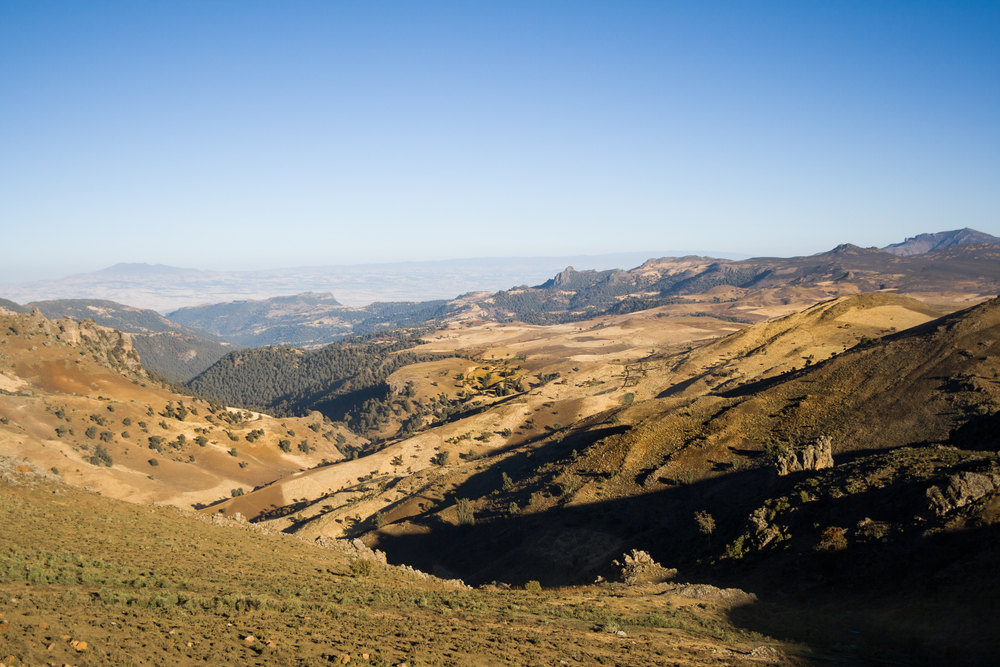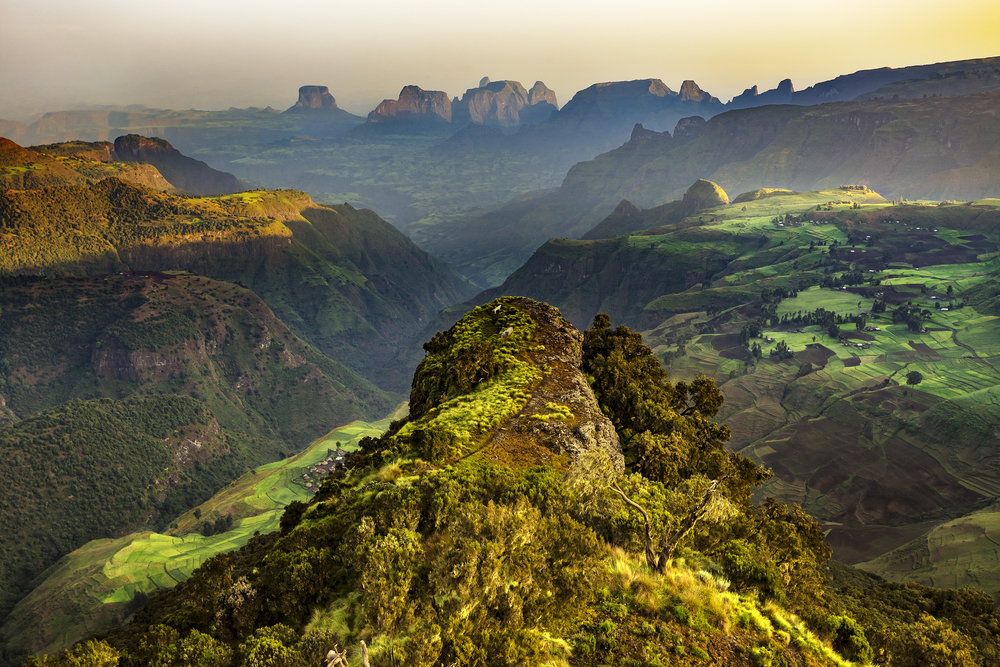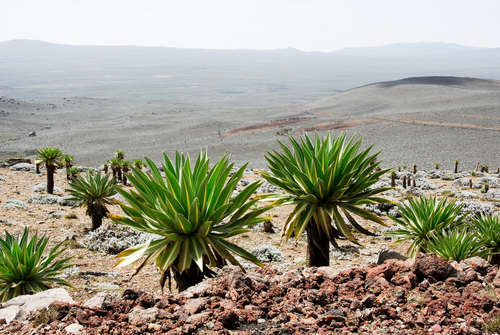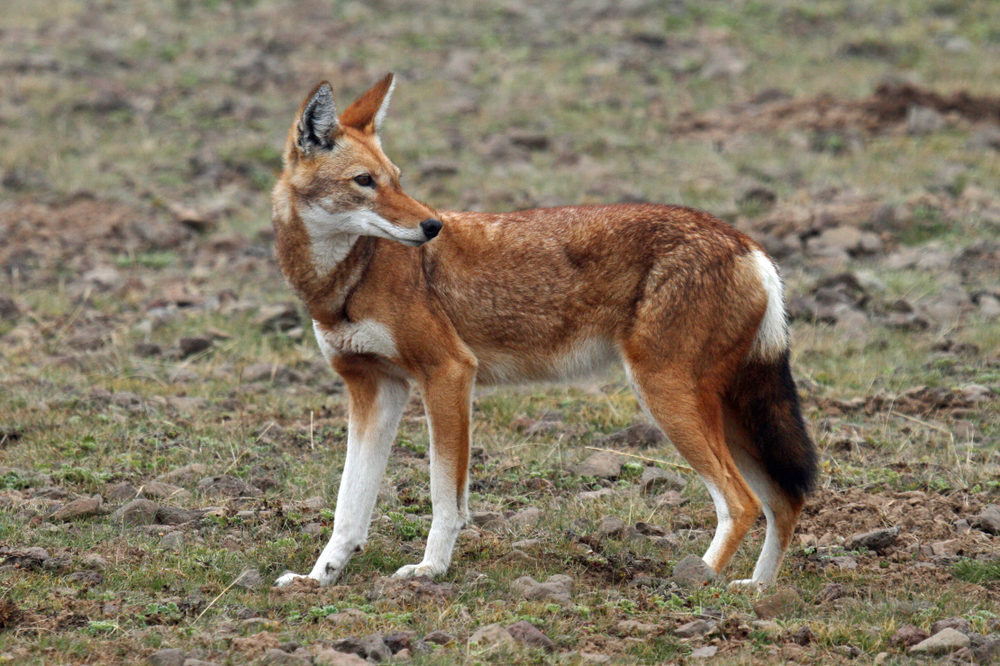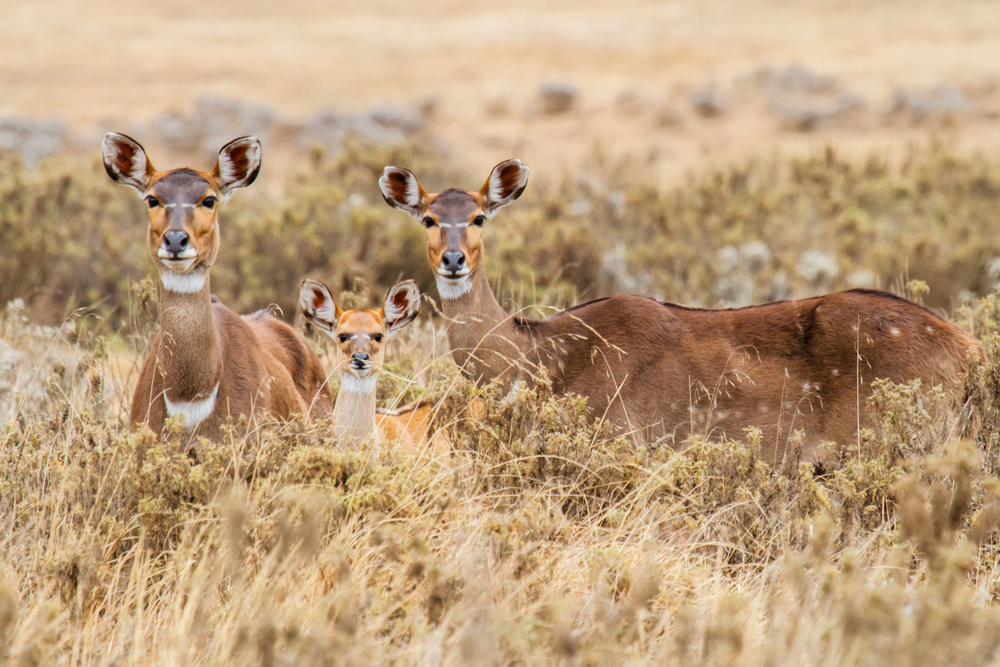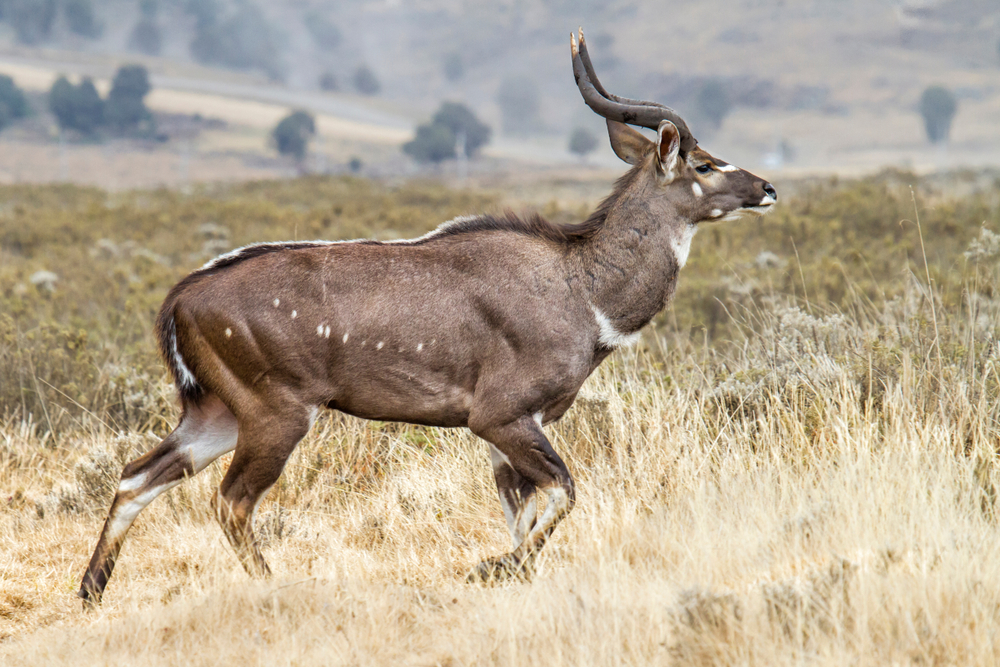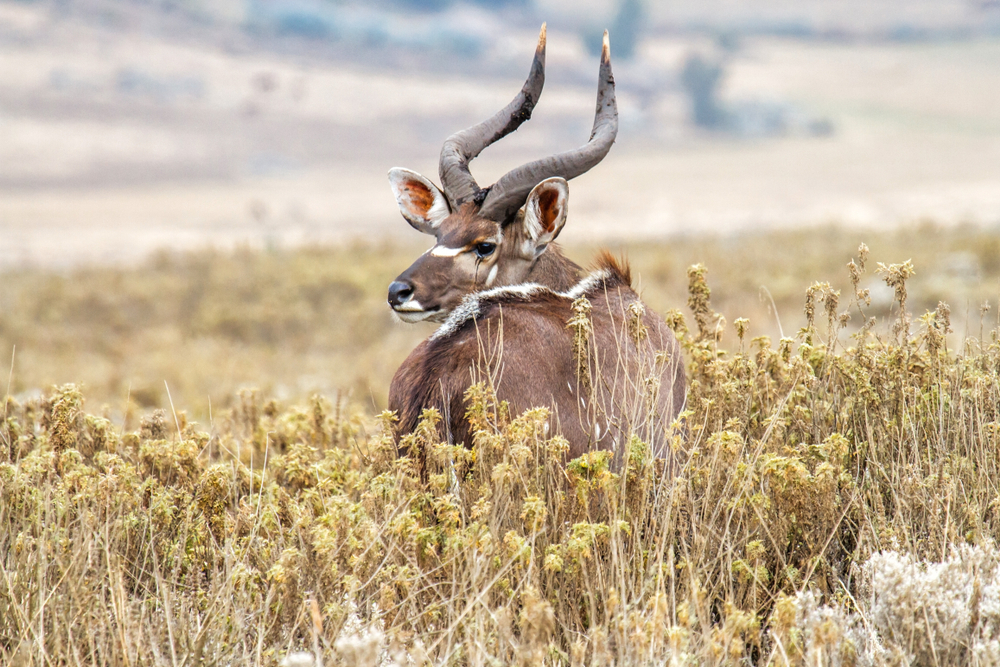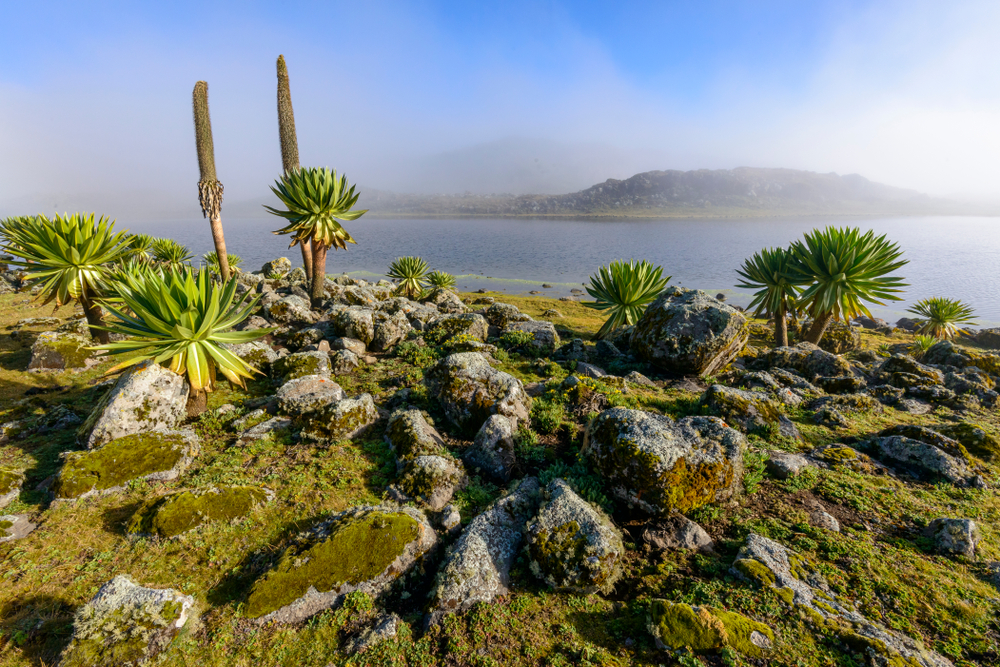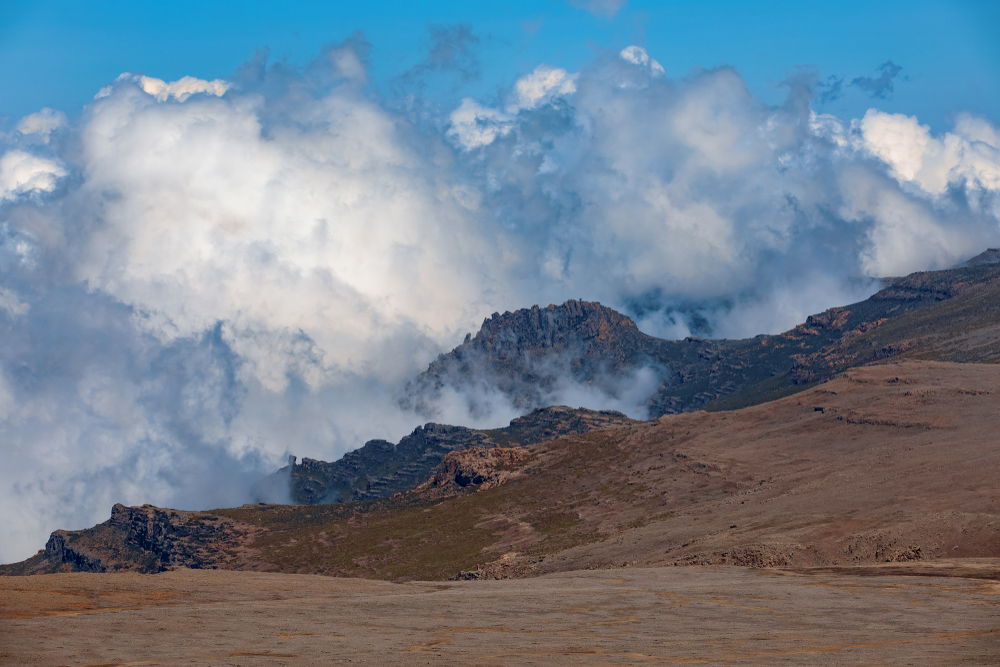Popular
Bale Mountains National Park is a biodiversity hotspot, especially celebrated for its unique assemblage of endemic species across vast Afro-alpine landscapes.
Ethiopian Wolf
Africa’s most endangered carnivore, the Ethiopian Wolf is slender and fox-like, specializing in hunting rodents in the high-altitude grasslands.
Mountain Nyala
An elegant antelope with spiral horns, the Mountain Nyala is almost exclusively found here, blending into the montane forests and grasslands.
Menelik’s Bushbuck
Darker and smaller than its relatives, Menelik’s Bushbuck is a shy creature, adept at navigating the dense underbrush of the park’s forests.
Bale Monkey
Unique to the southern Ethiopian highlands, the Bale Monkey thrives in bamboo forests, feeding predominantly on young bamboo shoots and leaves.
Giant Molerat
Found only in the Bale Mountains, this burrowing rodent is a key food source for the Ethiopian wolf, showcasing the park’s interconnected ecosystem.
African Wild Dog
Though increasingly rare, the African Wild Dog is a highly social and effective predator, roaming the park’s landscapes in search of prey.
Abyssinian Catbird
Mimicking the sound of a cat’s meow, the Abyssinian Catbird is known for its melodious duets, adding a soundtrack to the highland forests.
Blue-winged Goose
An endemic bird species, the Blue-winged Goose prefers the wetlands and alpine lakes, often seen in pairs or small flocks.
Spot-breasted Lapwing
Vibrant and vocal, the Spot-breasted Lapwing is found in the Afro-alpine meadows, its distinctive appearance a delight for birdwatchers.
Ethiopian Highland Hare
Adapted to cold climates, this hare’s brown fur blends into the Afro-alpine vegetation, illustrating the park’s unique adaptation strategies.








































































